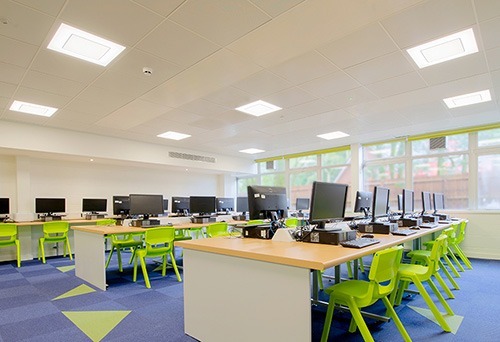
Biologically Effective Lighting for Schools
Evidence of the positive impact lighting for schools can make to students’ and teachers’ welfare and wellbeing is growing, says Tamlite Lighting’s Head of Wellbeing Debbie-Sue Farrell.
A well-designed lighting scheme is the best way to enhance any space, but in education establishments, good lighting goes a long way in helping to create a pleasant learning environment. Researchers around the world continue to highlight the positive contribution that better lighting can make to schools, colleges and universities.
As well as temperature, humidity and ventilation, lighting is central to providing the optimum conditions for both teachers and students, not just in terms of an enhanced learning or teaching experience, but to meet their wellbeing needs too. This is because building service functions can have a direct impact on personal performance, creativity, mood and function. And there is no denying that happier, healthier and more comfortable students and teachers are going to be more productive. For example, research carried out by the Lighting Europe initiative noted that students can achieve up to 14% higher scores in healthy buildings equipped with optimised lighting systems.

Over the last couple of years, teaching spaces have changed. They are now more dynamic, more considered and more human-centric. They need to be designed in such a way that it has a positive impact on learners and teachers. The best way to achieve this is by incorporating both natural and artificial lighting that can be tuned to the occupants’ needs.
Research shows that modern, intuitive LED lighting in education establishments can help students overcome early-morning tiredness and boost alertness and concentration levels throughout the day, and that those who study under human-centric light feel more invigorated and positive.
Fortunately, with the latest LED lighting and control technologies, it is now easier than ever before to identify and install systems that will work to the benefit of both students and teachers. By seeking a perfect balance between natural and artificial light, with different light output at different times of day, it is possible to offer illumination that works in conjunction with students’ natural rhythms. Deploying user-friendly controllers and interfaces allows staff to make easy adjustments and deliver appropriate levels and consistency of illumination, as well as eliminate glare and enhance energy efficiency; both are key considerations in education establishments.
Creating a sense of wellness within the learning environment is sure to remain under the spotlight for years to come. Suppliers, contractors and consultants who understand this, and who are able to integrate it effectively into their proposals and programmes of work, will be well-positioned to benefit from the new phase of projects that is sure to follow.